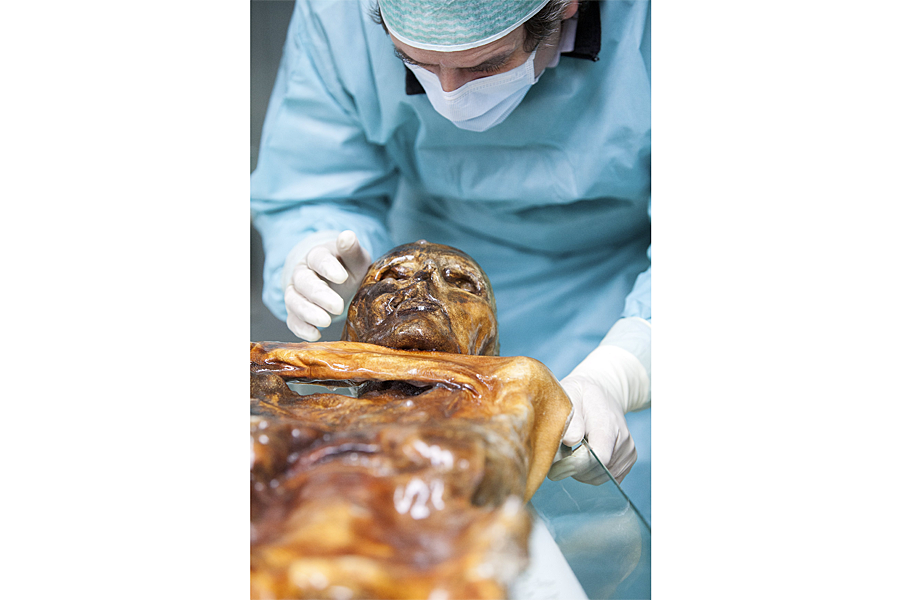Can mummies talk? Scientists find out.
Loading...
For the first time in 5,300 years, Otzi the iceman will talk again. But don’t expect him to carry a conversation; he’s a mummy after all, and it’s doubtful that English existed between 3359 and 3105 BC.
Discovered in 1991, Otzi is now the subject of a digital voice simulation experiment. Italian researchers in the northern city of Bolzano are working to recreate his voice using computerized tomography, or CT, scans.
"Of course we don't know what language he spoke 5,000 years ago," project coordinator Francesco Avanzini, a specialist at the local San Maurizio Hospital, told CNN.
"But we should be able to recreate the timbre of his vowel sounds and, I hope, even create simulation of consonants."
The human vocal tract as we understand it today has been in development since 100,000 years ago, according to Dr. Philip Lieberman, professor of cognitive and linguistic science at Brown University, though it remains difficult to pinpoint when we evolved from primitive grunts to actual speech.
"The first time we see human skulls – fossils – that have everything in place is about 50,000 years ago where the neck is long enough, the mouth is short enough, that they could have had a vocal tract like us," he told National Public Radio in 2010.
Mr. Avanzini and his colleagues will recreate a model of Otzi’s vocal tract, which includes the vocal cords and his mouth, in what they believe is the first experiment of its kind on a mummy. After the model is devised, the National Research Council in Padua will join the collaboration and use software to duplicate his voice.
"In about a year, we should be able to give Otzi a voice – or at least recreate the best possible approximation of his voice," Avanzini said.
But the project thus far has had a few hiccups. For instance, without Otzi’s tendons and ligaments, the researchers have had to make a few assumptions about how soft tissue can alter the vocal chords. According to Avanzini, the position in which Otzi lies is another issue.
"Another big problem is his position, with an arm covering his throat and hyoid bone, which is also dislocated," he said. "For our project, the arm is in the worst position you can imagine."
Discovered by hikers in the Italian Alps 25 years ago, Otzi soon became a world sensation as one of the oldest mummies ever recovered. Egyptian mummies, in comparison, tend to be several hundred years younger. Throughout the centuries, Otzi was preserved by snow and ice after he died from a flint arrowhead injury in his left shoulder. Experts believe he was murdered.
Since scientists began to trace his origins, the brown-eyed 110-pound mummy, who was 45 years old when he died, has provided unique insights about early human history. Earlier this year, scientists found traces of a common modern bacterium with Asian roots in Ozti’s stomach, which points to novel patterns of early human migration.
Today, Otzi resides in a special cell at the South Tyrol Museum of Archaeology in Bolzano.
Regardless of the minor setbacks, Avanzini’s team is optimistic. The first results are expected to arrive in a few months, and in as soon as one year, we may be able to hear how Otzi sounds.








